BYU Football Film Review: What is Wrong with the Defense?
Here is the kind of hard-hitting, hot take that you come to Cougs Daily for: something is seriously wrong with the BYU defense. Never has it been more apparent than in BYU’s loss to Arkansas. It can be frustrating as a fan, to know something is amiss but not directly be able to substantiate what that thing is. I want to fix that, but before I do, allow me to introduce this caveat.
I am not a coach and I don't pretend to know more about football than BYU's coaching staff. There is a reason they get paid to coach football and I get paid to make spreadsheets. That said, I do have eyes and can see that something is not right, even if I don't have all they answers, and this is what my eyes tell me. So without further ado, let's get into the film. What is wrong with BYU's defense?
Hockey Subs
Everyone’s favorite subject. I understand the hockey subs in theory. You build depth and keep guys fresh, but they stretch the players on the field mentally far too thin. This play is a prime example.
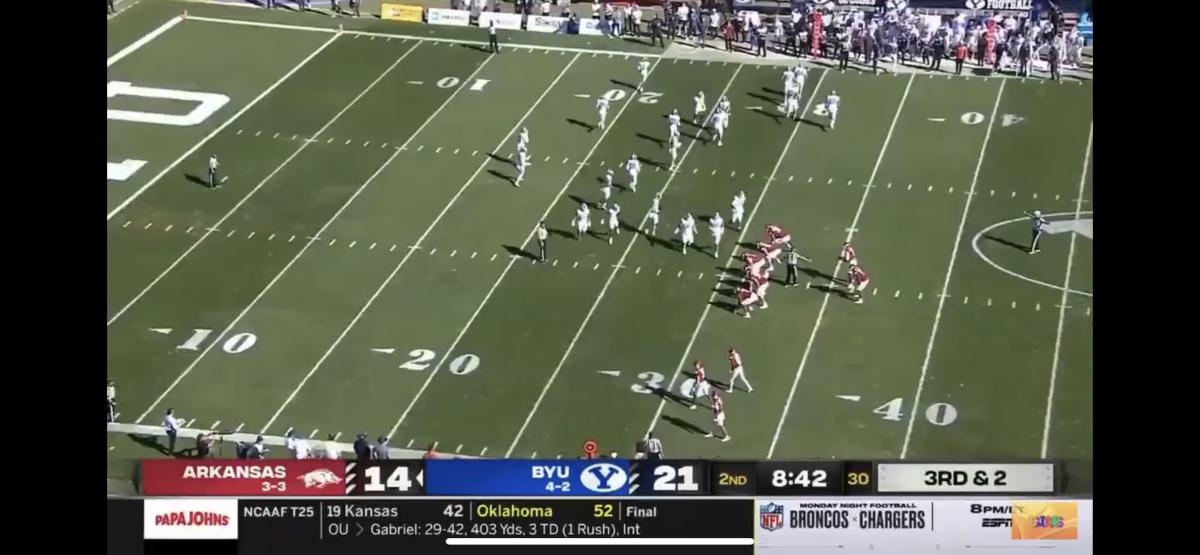
It’s 3rd and 2, BYU is up 21-14 and Arkansas is driving. BYU subs all 11 guys off the field. Count them. There are 21 BYU players on the field in this photo. Even the announcers get a chuckle out of it because this is something they have never seen before.
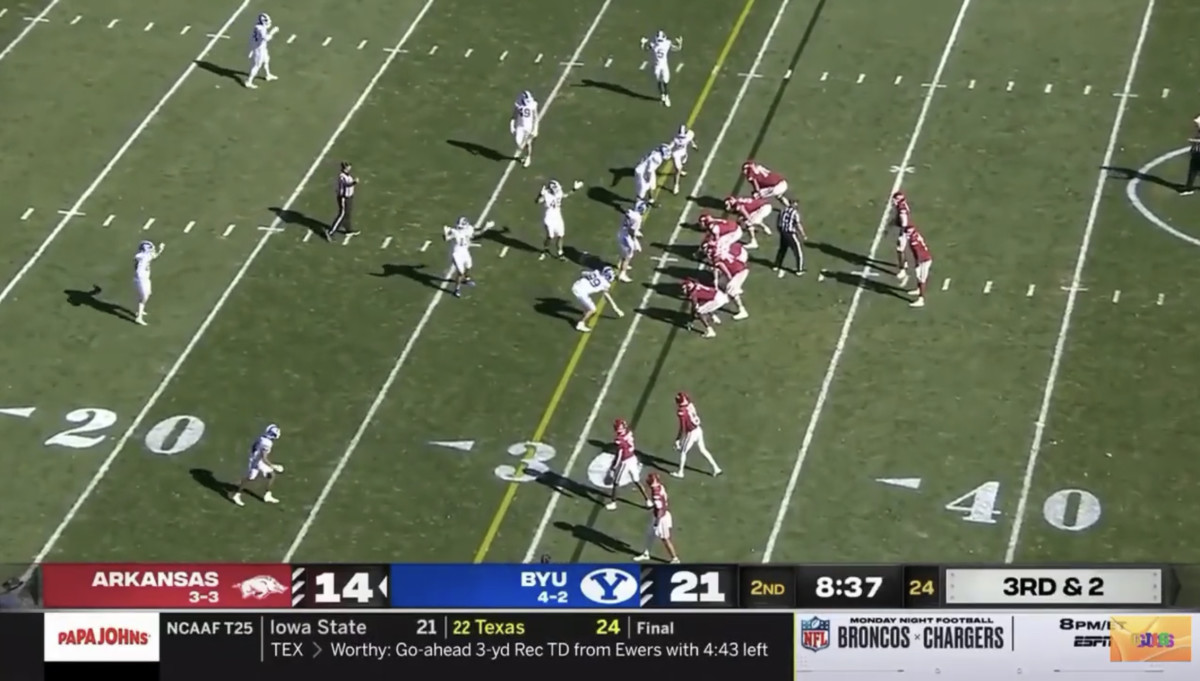
Here we find issue number one. The coaches signaled the call, but you know who didn’t see it? The players whose backs are turned because they were running on the field. Instead, they scramble to get lined up. Five players are signaling, a defensive lineman is literally pushing a teammate into position, the two safeties are 15 yards off, and the corner is 7 yards off (reminder, it’s 3rd and 2). The correct call was to send two more players to the short side of the field. Instead, you are left with one corner against three receivers.
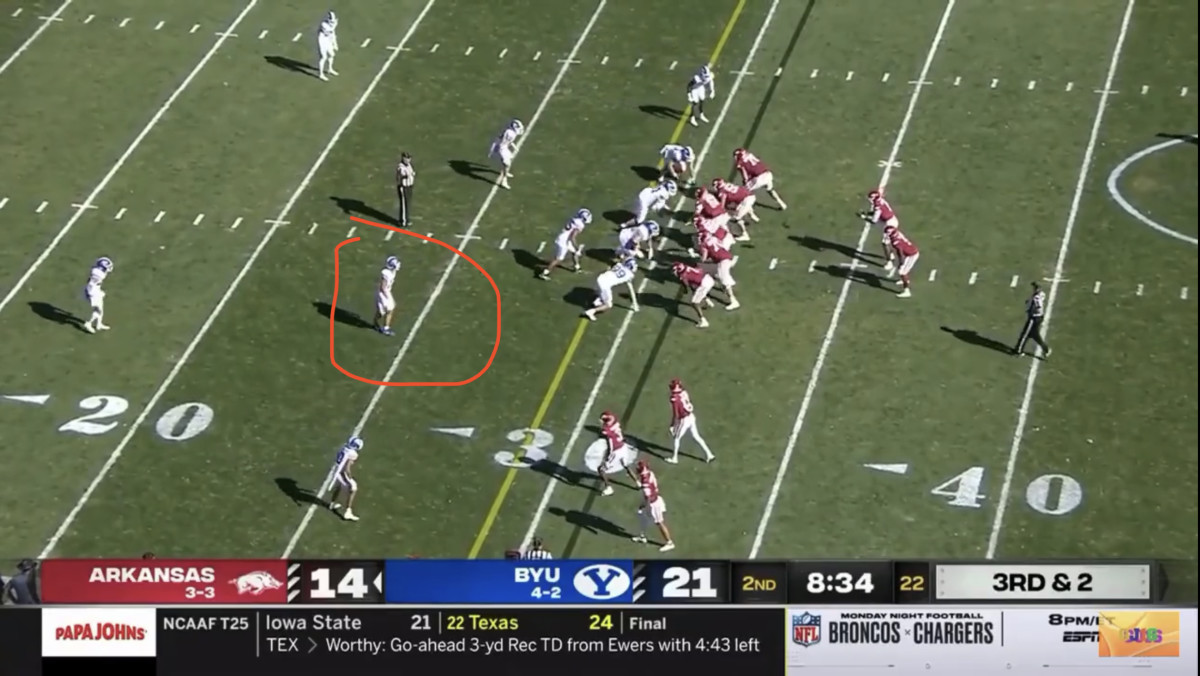
The ball is snapped, and the outside linebacker is still not set. Now it’s time to play offensive coordinator. If you were calling the plays for Arkansas, what play would you call based on this alignment?
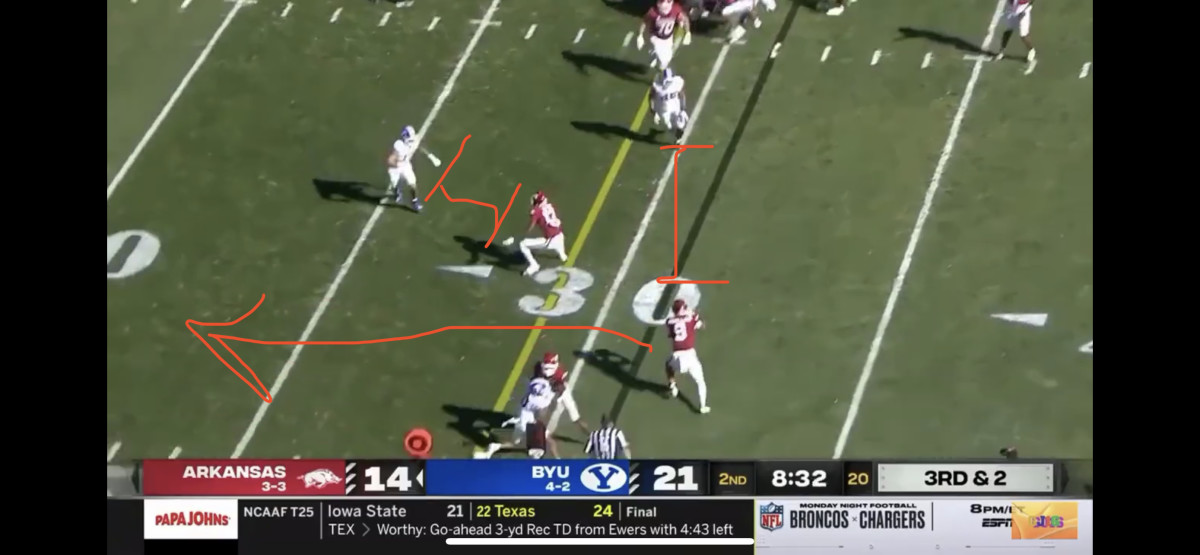
You would be correct. Arkansas runs a tunnel screen to the three-receiver side. The receiver catches the pass and turns up field. The corner is immediately blocked out of the play. The second receiver has yet to even reach his block because the backer lined up so far away. The closest player left is still nine yards away and the safety who eventually makes the play isn’t even on the screen. I am fairly confident that you, the reader, would have picked up the first down on this play.
At first glance, the errors here are on the players. They didn’t call out the play running off the field and they didn’t line up correctly, resulting in a blown assignment. The truth is though that there is just too much going on here for the players to succeed. You are asking them to go from the sideline to the field, assess the formation, line up properly, and play football all in about 11 seconds. The defense blows the assignment because in the seconds that should be spent assessing the formation, they are still running on the field.
Keeping your best players on the field
400 words and we still haven’t talked about this biggest issues with the substitutions. Instead of mixing line ups, BYU is taking off their starters wholesale. On the play previously shown, BYU subs out Max Tooley, Ben Bywater, Tyler Batty and Keenan Pili for Jackson Kaufusi, Payton Wilgar, Pepe Tanuvasa, and Alema Pilimai. BYUs starters played just 56% of the snaps against Arkansas. No one else in the country does that. For reference, Iowa is a top 10 defense and their starters played 83% of snaps against Michigan. Six of their starters played 100% of snaps. BYU didn’t have a single player eclipse 71% against Arkansas. It doesn’t take a football savant to tell you that your defense is typically at its best when your best 11 guys are on the field. I understand keeping players fresh, but if your best ones cant stay on the field for more than 70% of the time, we need to talk about offseason conditioning.
Bad Angles
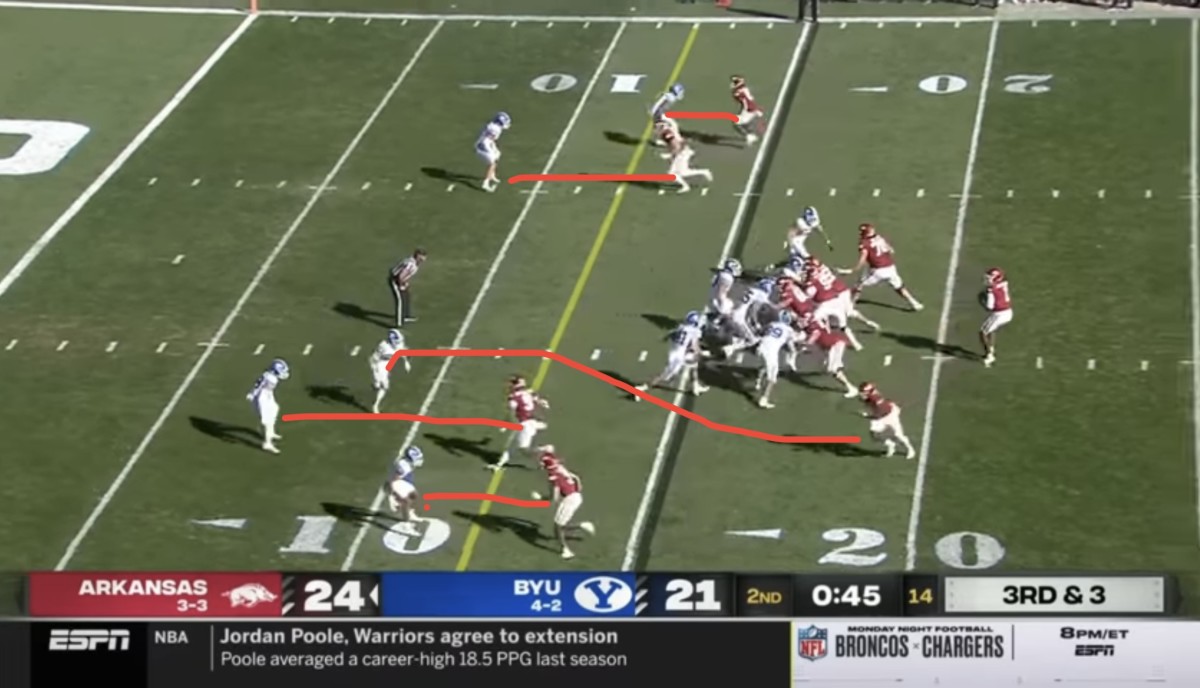
Here’s a play call that will make BYU fans happy. BYU brings the heat on third down. BYU rushes six, leaving five defensive backs to play man against the five receivers going out on routes.
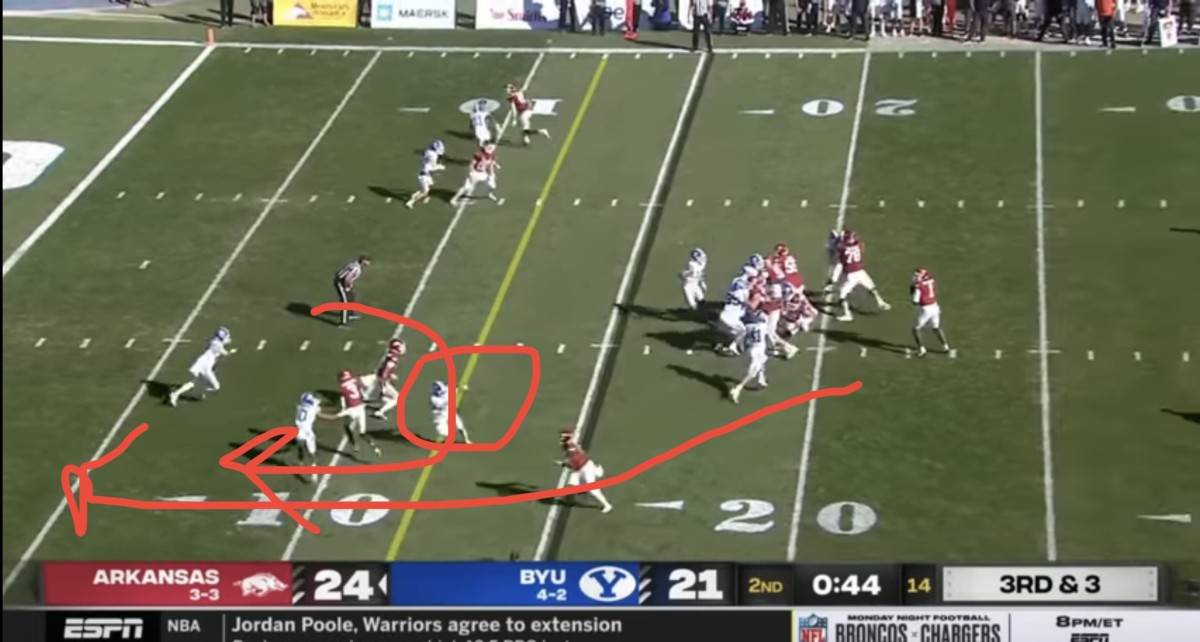
The offensive play call was perfect. Arkansas runs a pick play on the safety. The safety decides to take the long way around leaving the RB wide open on the wheel route for a touchdown.
All this is to say, pressure isn’t always the answer. You can bring all the blitzes in the world, but if one player makes a mistake or takes a bad angle in man coverage, it’s an easy six points for the offense.
Poor Technique
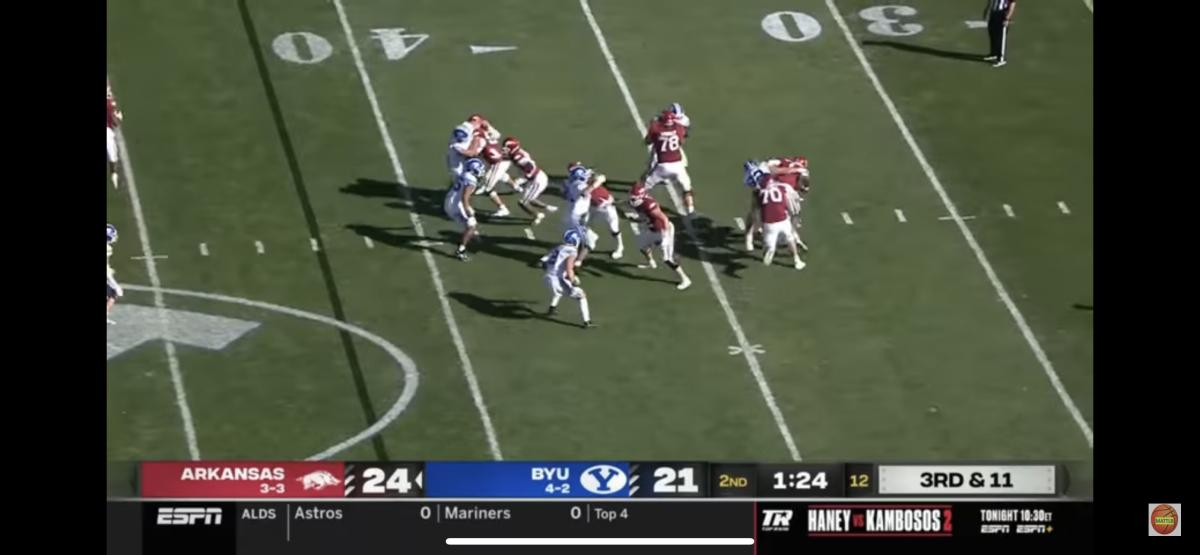
Now lets talk about the back breaker. 3rd and 11, down by 3, and a chance to give the ball back to the offense to get a score before the half. BYU brings heat again, and Batty beats the left tackle quite easily. There’s only one problem. He tries to tackle KJ Jefferson high.
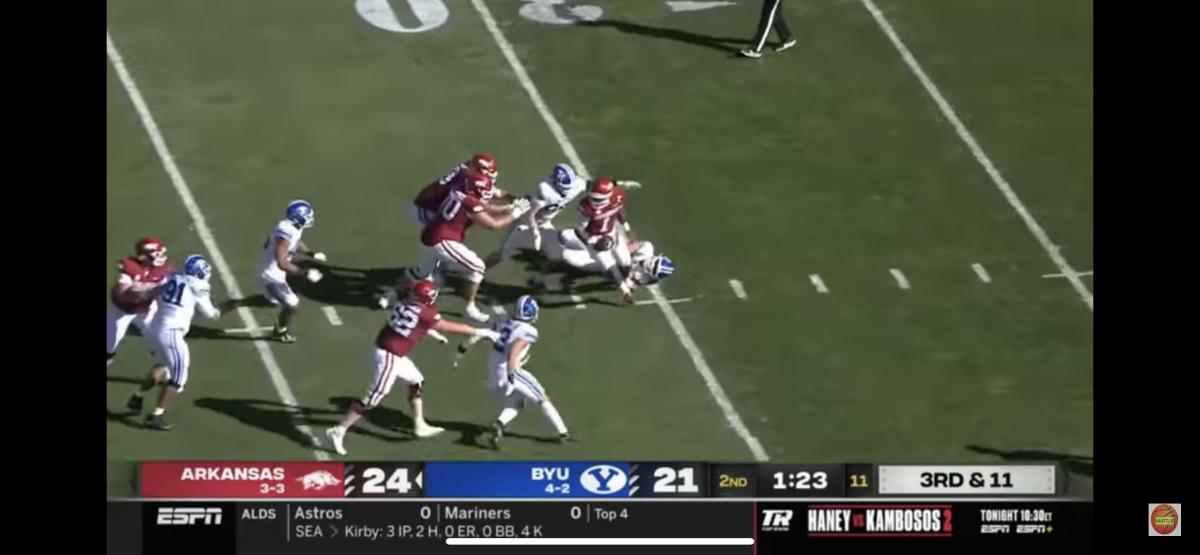
So does Nelson.
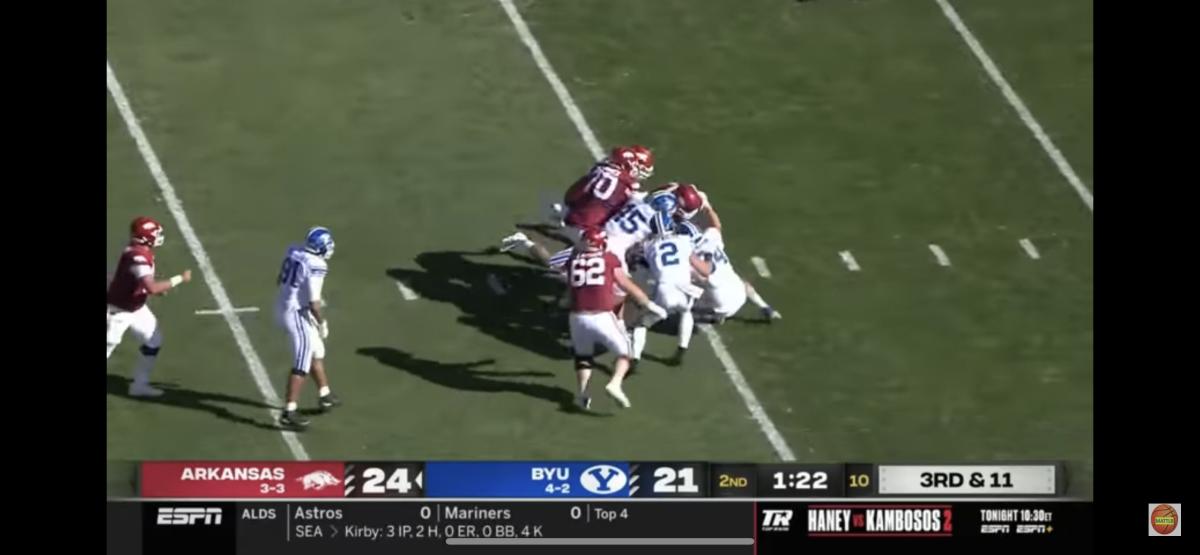
So does Tanuvasa. Bywater hardly even engages here.
Jefferson somehow escapes and dumps it off to the flat, which wouldn’t be an issue if Micah Harper took a better angle. Harper attacks the outside shoulder of the receiver despite the receiver being on the sideline. Attack the inside shoulder and you might force him out of bounds. Instead, the receiver easily side steps and picks up 30 yards.
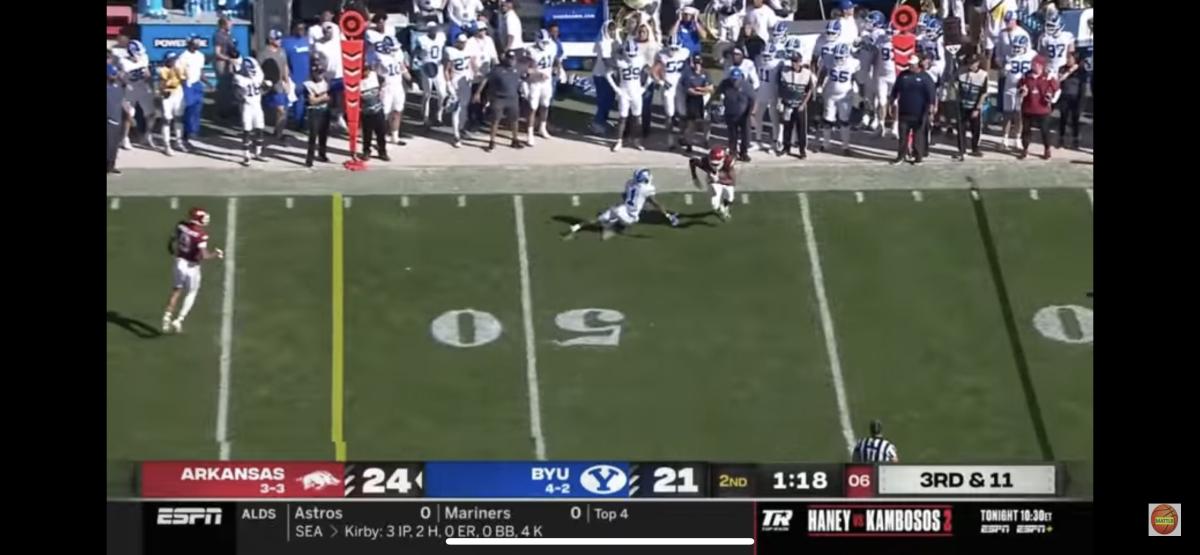
It also needs to be said that this is not good tackling technique.
This play could have been stopped behind the line to gain on five different occasions, but was not because of poor technique. We’ve seen this kind of tackling repeatedly this season from both the defensive line and the secondary. You can talk all you want about Tuiaki’s scheme, but if players don’t execute when they are in position, there isn’t a scheme in the world that will be successful.
Alignment
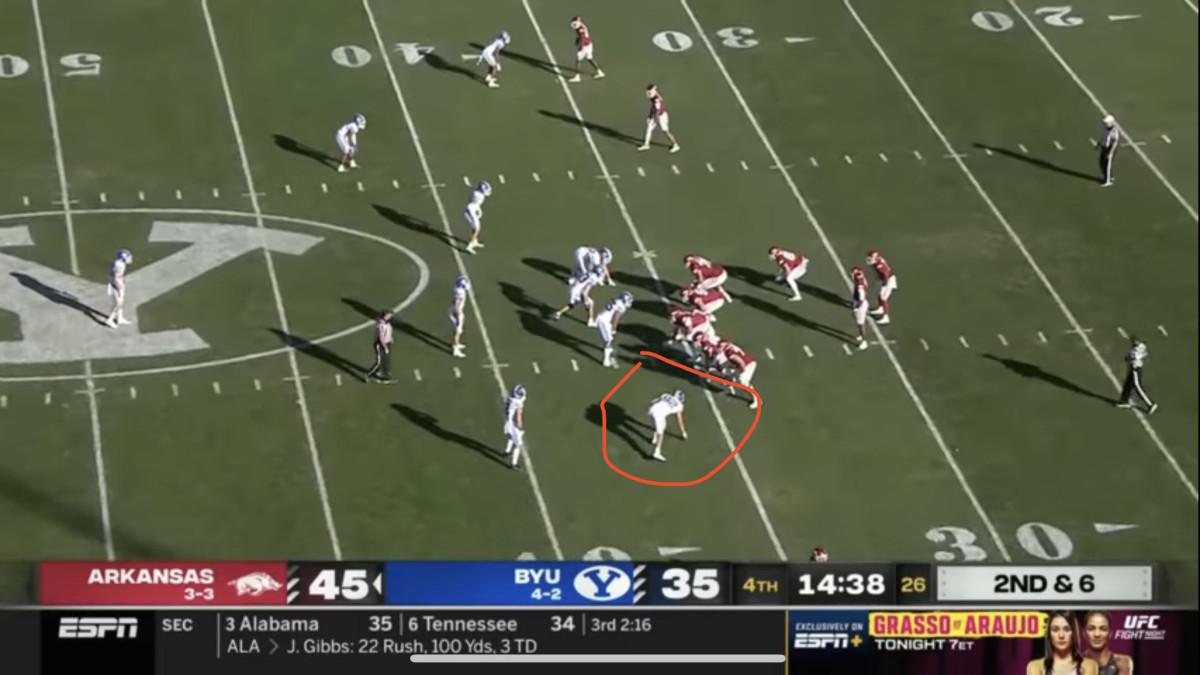
Now, the dagger play. Down by 10 in the fourth quarter in an obvious run situation. Look at where Batty lines up here. Let’s play offensive coordinator again. Where would you run this play? In theory, you line up here to maintain outside leverage and force the play inside, but watch when the ball gets snapped.
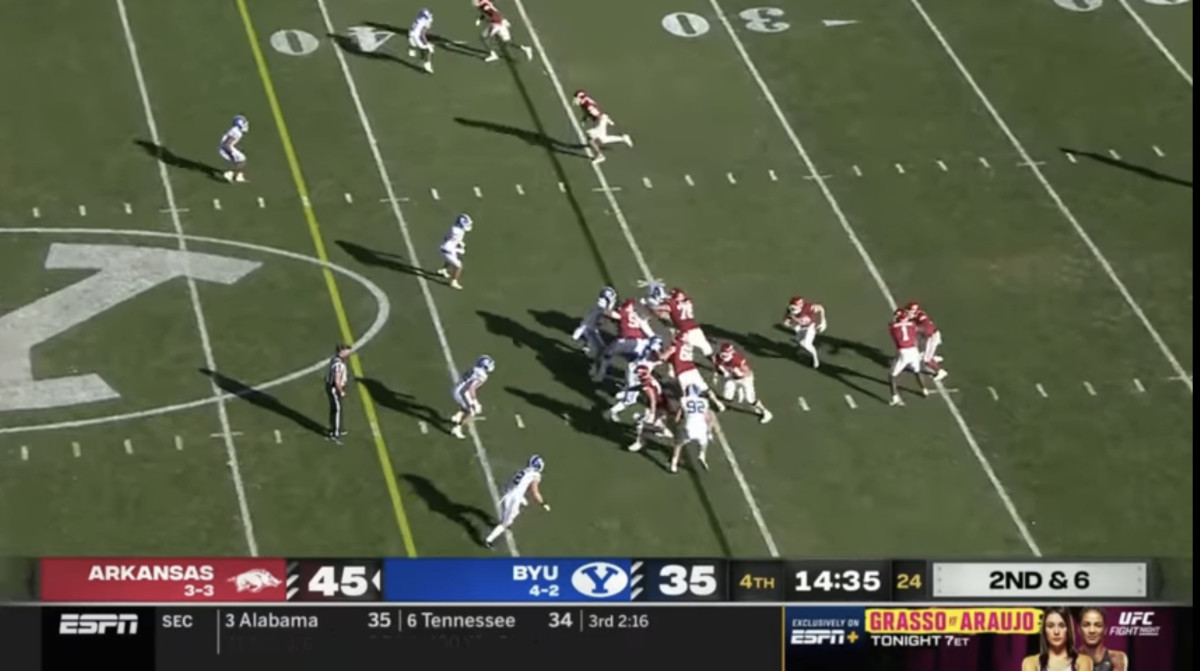
Batty immediately turns and runs horizontally through the line of scrimmage, eliminating any leverage he has. If Batty was going to do that all along, why not just line up where he was running to in the first place? He doesn’t gain ground or make a play on the ball. He takes himself out of the play by running sideways.
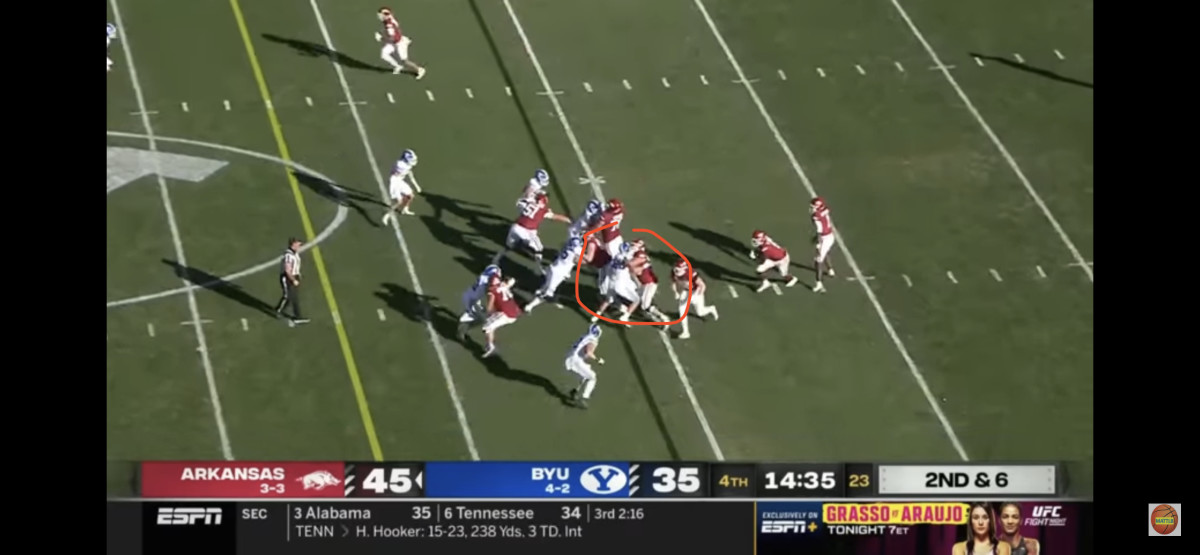
Granted, Batty gets held, but lets reassess. The Arkansas line has completely sealed the edge leaving the tight end one-on-one with the linebacker.
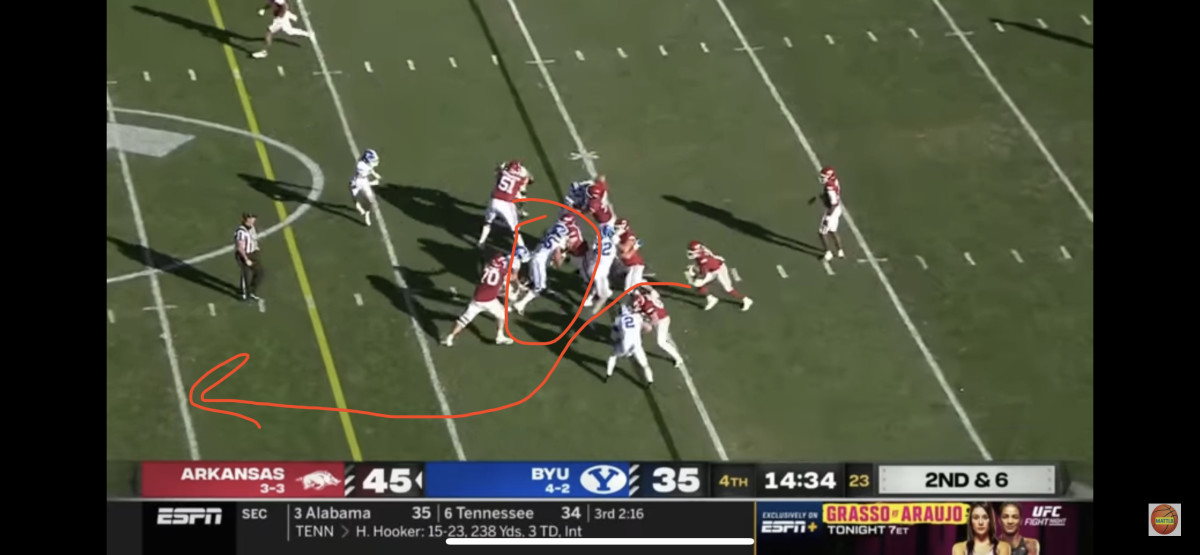
The linebacker eats the block with no one home behind him. If Batty either stays outside or even just lines up inside, the play gets funneled to one of these two linebackers circled, and the play goes for a yard. Instead, Batty gets blocked into a would-be tackler and it’s a 65 yard dagger.
Solution: Keep it Simple
In the end, all of these problems are seemingly fixable, but the defensive staff is just over-thinking themselves. They sub out all 11 starters out on a third down when the offense is driving, all in the name of keeping them fresh for, presumably, a third down when the offense is driving. You line up a defensive end two yards outside the tackle just to run him so far inside that he essentially becomes a defensive tackle. From an execution perspective, bad angles and missed tackles end up in big plays that cost BYU points.
Changes have been and will be made to the defense. I anticipate the defense we see against Liberty will look a lot different from the defense we saw against Arkansas, and that many of these issues will be addressed. But the solution is really simple: Keep your best 11 guys on the field, give them time to diagnose what’s happening on the field, teach them sound technique, and the defense will be just fine. The staff just needs to keep it simple.
